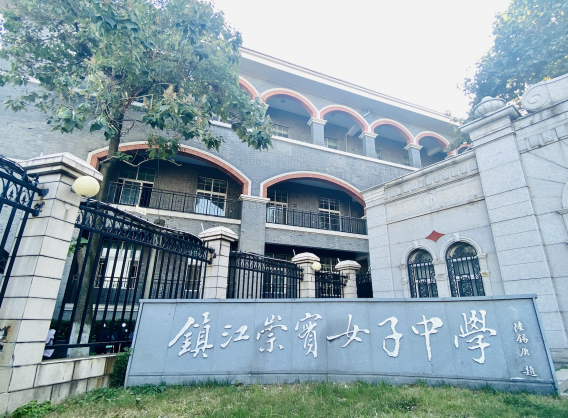Foot-binding was a long-standing corrupt custom in ancient China and was used to pose cruelty to countless women. But do you know where in China was the first place ever that abandoned the practice?
The answer lies in Zhenjiang Chongshi Girls’ Middle School, Zhenjiang, Jiangsu Province. With 135 years of history, the school was the birthplace of the Chinese women’s Temperance Movement and played a critical role in Chinese women’s movements.
In order to create the perfect “three-inch golden lily feet” (an ancient nickname of women’s bound feet), when girls were seven or eight years old, cloth strips about two inches wide and one foot long were used to wrap around their feet, so that they would be shaped like bamboo shoots - the smaller the more beautiful. Unless toenails needed to be trimmed, the binding cloth would remain fastened for periods of ten and a half days. When untying the foot cloth, little-footed women couldn’t make a step.
A female missionary in China, Archibald Little, questioned the foot-binding custom at that time. She once wrote that these little girls were leaning heavily on a walking stick higher than themselves, or lying on the backs of adults, or sitting and crying sadly.
The origin of abolishing the foot-binding movement
In 1884, it was the tenth year of the reign of Emperor Guangxu (Qing Dynasty). On Easter, March 6th, the church in the United States assigned Hory C. Robinsen to establish a girls’ middle school in Yinshanmen Christian Church in Zhenjiang. The school was named Zhenjiang Private Girls’ School, also known as Zhenjiang Church School. Because it was located on a hill named Windmill Hill, the school was thus called “Windmill Hill Private Girls’ School”. Later, it was changed to a special female middle school, and Hory C. Robinsen was appointed as its principal.
In 1887, Robinsen initiated the Chinese Women’s Temperance Society, which advocated for abstinence from alcohol, prevention of drug abuse, the abolition of foot-binding, and prohibition of gambling, etc. The movement demanded that the new advocations started from girls in the school and women nearby. In view of this corrupt foot-binding custom, Robinsen established the Natural Feet Society. Later, this organization was accepted everywhere. Finally, in 1928, the government of the Republic of China issued a ban on foot-binding. After a long dispute between two opposite groups, the foot-binding custom that lasted for a thousand years was largely eradicated.
Expansion of the Girls’ Middle School
In 1920, the American church decided to expand Chongshi Girls’ Middle School. In the church, Miss Olivet made a will to give her inheritance to the school and expand the school building. In the same year, a teaching building of two stories with 40 classrooms and 16 auditoriums was under construction. On December 17th of the following year, the work was completed. The building was demolished in 1982 due to termite infestation.
On March 26, 1924, a two-story building of 45 dormitories, an administrative building and three teachers’ buildings were completed. So far, the school and the church's women and children’s hospital had eight large and small buildings, costing 400,000 US dollars, and covering 40 mu (6.58 acres). It was a group of western-style buildings on Windmill Hill.
At the end of the Qing Dynasty and the beginning of the Republic of China, the trend of abolishing women’s foot-binding was on the rise, especially after Zhenjiang took the lead in launching women’s abstention movements. All over the country, anti-foot-binding associations were set up one after another, calling for and publicizing the natural feet movement. Churches in China spared no effort to free women’s feet.
- Translated by Charlie Li












